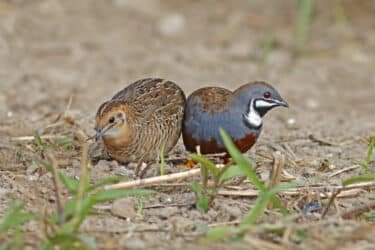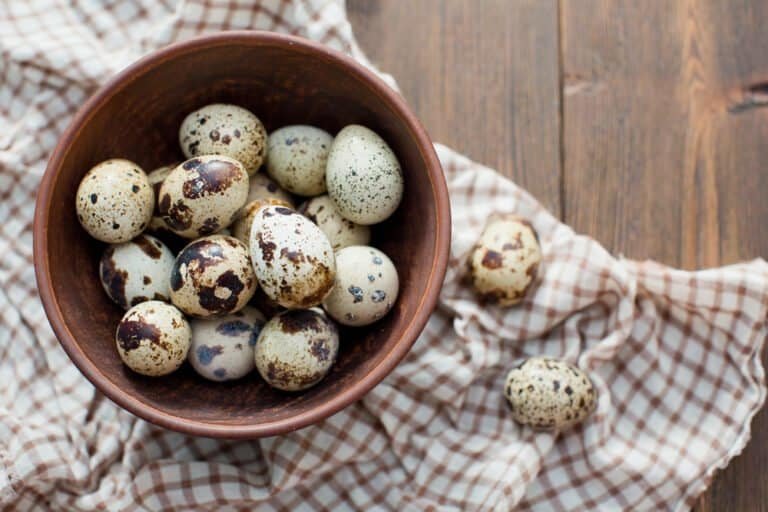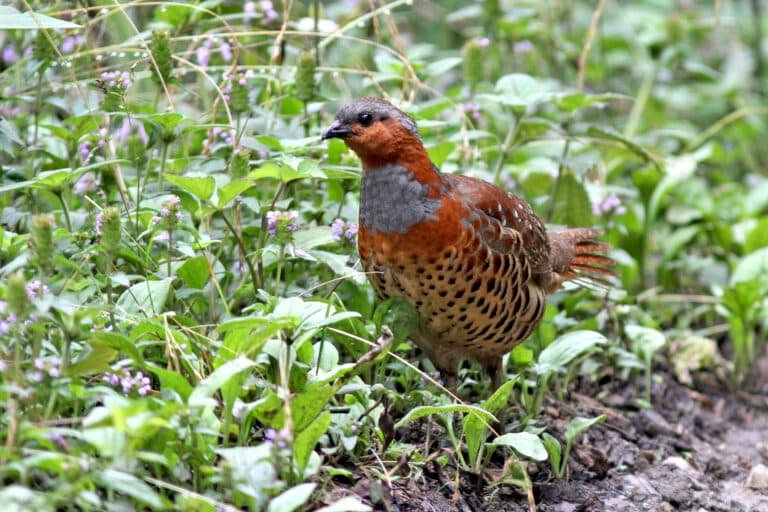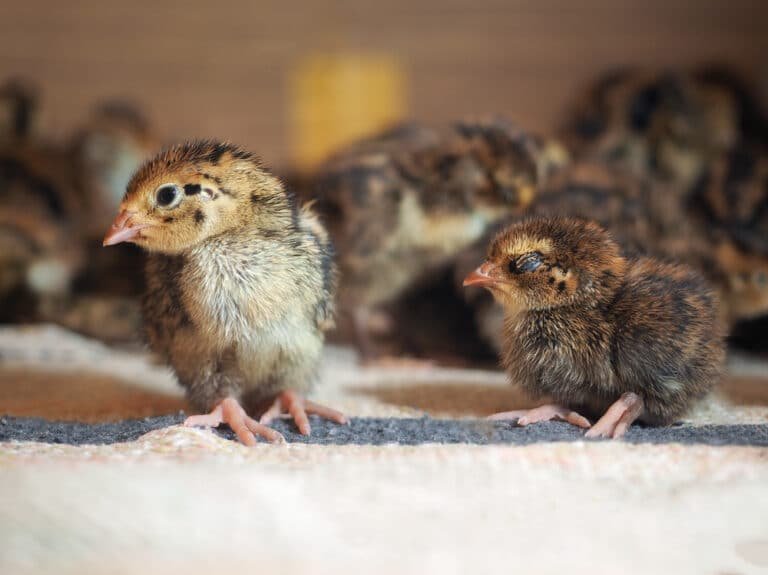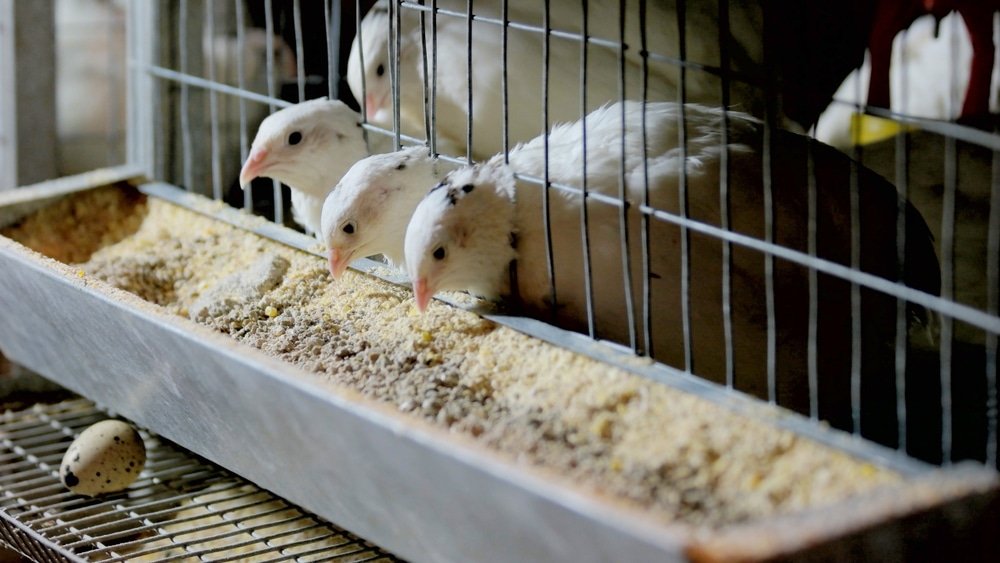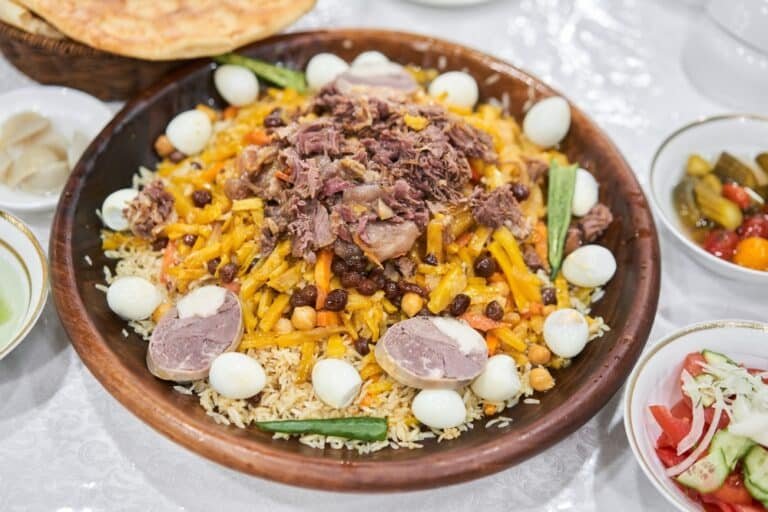Button Quail: Fascinating Facts of The Avian Charmers
The button quail, also known as the Turnicidae, is a captivating bird species that has fascinated ornithologists and bird enthusiasts. These small avian creatures belong to the order Charadriiformes and are distinctively different from other birds due to their unique physical characteristics, intriguing behavior patterns, and diverse habitat preferences. Despite their diminutive size, button quail have captured the attention of researchers who seek a deeper understanding of these enigmatic creatures.
Brief Overview of Button Quail
Button quail are small birds measuring 4-5 inches long, making them one of the smallest avian species globally. With plump round bodies, short wings, and strong legs designed for scurrying rather than flying long distances, these birds possess a distinctive appearance that sets them apart from their feathered counterparts. They exhibit sexual dimorphism – males often display more vibrant plumage with intricate patterns than females.
These fascinating birds are native to various regions around the world. The button quail family encompasses approximately 16 recognized species with subtle variations in coloration and behavior.
Some examples include the Barred Button Quail found in Southeast Asia and Australia or the African Quail inhabiting the grasslands of Africa. Each species possesses its own unique set of characteristics that contribute to its adaptability in diverse environments.
Understanding The Button Quail Habitat and Behavior
An in-depth understanding of button quail is essential for academic purposes and conservation efforts to preserve their habitats and ensure survival amidst various environmental challenges. By unraveling the intricacies behind these birds’ characteristics, such as morphology, breeding patterns, feeding habits, and social behaviors, scientists can gain valuable insights into the ecological role button quail play within their respective ecosystems. Furthermore, comprehending button quail’ habitat preferences and distribution patterns is crucial in formulating effective conservation strategies.
Due to their diverse habitat range that includes grasslands, wetlands, and forests across continents like Asia-Pacific and Africa, studying their specific needs and interactions with these environments aids in preserving suitable habitats for their populations. Understanding their behavior patterns, such as mating rituals and nesting habits, also provides a foundation for species-specific conservation efforts.
Taxonomy and Classification
Description of the scientific classification of button quail (Order: Charadriiformes, Family: Turnicidae)
Button quail belong to the order Charadriiformes, which encompasses a variety of bird species, such as plovers, sandpipers, and gulls. The family Turnicidae is unique within this order as it consists solely of the button quail. These small birds are often called “the smallest game birds in the world,” emphasizing their diminutive size compared to other avian species.
Within the family Turnicidae are approximately 16 recognized species of button quail. They are further divided into two major genera: Turnix and Ortyxelos.
The genus Turnix comprises most button quail species, including popular ones like the Barred Buttonquail (Turnix suscitator) and Small Buttonquail (Turnix sylvaticus). On the other hand, Ortyxelos consists of a single species known as the Madagascar Buttonquail (Ortyxelos meiffrenii), endemic to Madagascar.
Explanation of their evolutionary history and relationship to other bird species
Button quail have a fascinating evolutionary history that links them with other avian groups while showcasing their distinctiveness. They share an evolutionary lineage with shorebirds like plovers and sandpipers within the order Charadriiformes.
Molecular studies suggest that button quail diverged from these shorebird ancestors around 35 million years ago. Despite sharing certain characteristics with shorebirds, button quail have evolved unique adaptations suited to life on land rather than in coastal habitats.
Their short wings make them less proficient flyers compared to their relatives in Charadriiformes. Instead, they rely on well-developed legs for terrestrial locomotion, enabling them to navigate grasslands and other land-based habitats with agility.
Furthermore, button quail exhibit some similarities to galliform birds like quail and pheasants. This resemblance is attributed to convergent evolution, in which unrelated species develop similar traits due to shared ecological demands. For instance, both button quail and galliforms possess rounded bodies and strong legs adapted for ground-dwelling lifestyles.
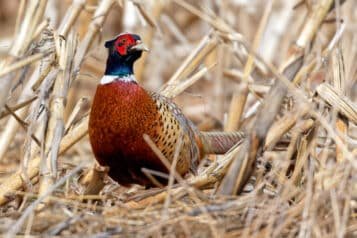
However, molecular studies have confirmed that these similarities result from parallel evolution rather than a close evolutionary relationship.
Understanding button quail taxonomy and evolutionary history sheds light on their unique position within the bird kingdom. It highlights their adaptations for life on land while providing insights into the fascinating relationships they share with shorebirds and galliforms.
Physical Characteristics
Button quail’s size, shape, and coloration
Button quail are remarkable avian creatures known for their small size, measuring between 10 to 12 centimeters in length and weighing merely around 30 to 40 grams. Although small, these birds exhibit substantial variations in their physical characteristics across different species. One of the most noticeable differences lies in their plumage colors and patterns.
For instance, the Barred button quail (Turnix suscitator) displays a rich combination of reddish-brown and black bars on its upperparts. In contrast, the Painted button quail (Turnix varius) showcases striking black-and-white patterns resembling intricate brushstrokes. Additionally, these enchanting birds display a range of shape variations amongst species.
A prominent feature is their round body shape, resembling a plump ball. This attribute gives them an adorable appearance while contributing to enhanced maneuverability through thick vegetation or grasslands where they predominantly reside.
Moreover, button quail possess short wings relative to their body size. These wings are adapted for rapid movements and quick take-offs when threatened or during short-distance flights to escape predators.
Distinctive features like short wings, round bodies, strong legs
One distinguishing characteristic of button quail is their strong legs and feet. These avian beings have relatively long legs compared to other bird species within similar size ranges. Their legs are equipped with powerful muscles that allow them to sprint rapidly across the ground when searching for food or escaping danger.
Notably, button quail possess sharp claws at the end of each toe that aid them in scratching through debris or soil while foraging. Furthermore, these birds exhibit exceptional agility due to their unique body structure composed of a compact round body and relatively stubby wings.
This body shape facilitates easy movement through dense vegetation or grassy terrains. The round body design also contributes to their ability to quickly change directions while running, enabling them to navigate complex labyrinths with agility and precision.
Button quail possess remarkable physical characteristics that make them stand out among avian species. Their size, shape, and coloration exhibit notable variations across different species, adding to their charm and allure.
With their round bodies, short wings, strong legs, and distinctive plumage patterns, these birds have evolved to thrive in various habitats and effectively adapt to their surroundings. Understanding these physical traits enhances our appreciation of the button quail’s uniqueness within the avian world.
Habitat and Distribution
Exploration of Diverse Habitats
Button quail are highly adaptable birds, capable of thriving in various habitats across the globe. They are commonly found in grasslands, where their small size and ground-dwelling behavior allow them to navigate through dense vegetation easily. In these open grassy areas, button quail often utilize their excellent camouflage skills, blending seamlessly with their surroundings to avoid potential predators.
Additionally, they have been observed in forests, particularly those with a mix of shrubs and undergrowth that provide ample cover for foraging. Wetlands also serve as suitable habitats for button quail due to the abundance of insects and aquatic plants that form a significant part of their diet.
These wetland areas include marshes, swamps, and floodplains where button quail can find food resources and nesting sites. The adaptability of these birds allows them to adjust to different moisture levels within wetland ecosystems.
Discussion on Distribution
Button quail exhibit a wide distribution across continents around the world. One region where they are particularly prevalent is the Asia-Pacific area, encompassing countries such as India, China, Indonesia, Malaysia, and Australia.
These regions inhabit various ecosystems ranging from grasslands like the Indian subcontinent’s Gangetic plains to Australia’s arid inland regions. Africa also serves as a significant habitat for these fascinating birds.
Their presence can be observed in different African countries, including Kenya, Tanzania, South Africa, and Zimbabwe. Within Africa’s diverse landscapes that encompass savannas and woodlands rich in biodiversity, button quail find suitable conditions for survival.
Furthermore, it is important to note that button quail species may have specific distribution patterns within continents or countries due to varying ecological factors such as climate conditions and food availability. Button quail exhibit a remarkable ability to adapt to various environments, thriving in grasslands, forests, and wetlands.
Their distribution spans continents, with significant populations in Asia-Pacific and Africa. Understanding their habitat preferences and distribution patterns plays a crucial role in conservation efforts to protect these captivating birds and ensure their continued existence in the wild.
Behavior and Social Structure
Insight into the social behavior of button quail, including mating rituals and territoriality
Button quail exhibit fascinating social behavior, with a complex system of courtship rituals and territoriality. During the breeding season, males engage in elaborate displays to attract females.
These displays involve puffing up their chest feathers, bobbing their heads, and emitting soft vocalizations. The males also engage in vigorous chasing and mock fighting to establish dominance over competing suitors.
Once a pair has formed, they become monogamous for the breeding season. Both male and female button quail actively participate in nest building.
They construct their nests on the ground, hidden amongst vegetation, or occasionally utilize abandoned bird nests as a foundation. The female lays a clutch of eggs, usually around 5-8 in number, which she incubates for about two weeks until they hatch.
Examination of their unique nesting habits, such as ground nests or utilizing abandoned bird nests
Button quail distinctive nesting habits contribute to their survival in varied environments. Their preference for ground nests allows them to blend seamlessly with their surroundings while protecting them from predators. The nests are often carefully constructed depressions lined with grasses, leaves, and feathers to provide insulation.
Interestingly, some species of button quail exhibit a rather intriguing nesting strategy by utilizing abandoned bird nests. This behavior is more commonly observed when suitable nest sites on the ground are scarce or unavailable due to environmental conditions or competition from other bird species.
By repurposing these existing structures, button quail save time and energy that would otherwise be spent constructing an entirely new nest. Button quail display fascinating social behaviors during mating rituals while exhibiting unique nesting habits that aid their survival.
From intricate courtship displays to meticulous construction of ground nests or utilization of abandoned bird nests, these behaviors and adaptations showcase the resourcefulness and adaptability of this remarkable bird species. Understanding these aspects of their behavior and social structure is crucial to appreciating the complexities of button quail lives in their diverse habitats.
Diet and Feeding Habits
Button quail, as highly adaptable and resourceful birds, possess an omnivorous diet that allows them to thrive in various environments. Their feeding habits encompass diverse food sources, including seeds, insects, small invertebrates, vegetation, and occasional fruits. This varied diet ensures they can find sustenance in different habitats throughout their geographical range.
The Button Quail’s Omnivorous Diet
Seeds make up a significant portion of the button quail’s diet. They have a particular affinity for grass and weed seeds found abundantly in their natural habitats, such as grasslands and meadows.
These tiny birds use their strong beaks to crack open the seed shells efficiently. Insects also play a vital role in their diet.
Button quail seek insects like beetles, ants, termites, and grasshoppers among the dense vegetation or ground cover where they forage. Their quick reflexes enable them to capture these small arthropods with precision.
Furthermore, button quail are opportunistic feeders for small invertebrates like spiders, worms, snails, and crustaceans. They use their sharp beaks to probe into soil crevices or leaf litter to uncover these hidden treasures.
In-depth Analysis of How They Forage for Food
The button quail’s feeding behavior is characterized by an interesting combination of pecking and scratching techniques. With their stout beaks perfectly adapted for ground-dwelling lifestyles, they peck at seeds or insect prey resting on the surface or hidden within short vegetation. Moreover, button quail exhibit remarkable scratching abilities that aid them in finding buried food items like insects or plant roots.
Using their strong legs and well-developed feet armed with sharp claws, they scratch away the top layer of soil or leaf litter to expose hidden prey or unearth tasty morsels. This unique foraging behavior allows them to access a wider range of food sources and helps maintain healthy ecosystems by aerating the soil and facilitating nutrient cycling within their habitats.
Diet and Feeding Habits
Button quail, as highly adaptable and resourceful birds, possess an omnivorous diet that allows them to thrive in various environments. Their feeding habits encompass diverse food sources, including seeds, insects, small invertebrates, vegetation, and even occasional fruits. This varied diet ensures they can find sustenance in different habitats throughout their geographical range.
An Overview of the Button Quail’s Omnivorous Diet
Seeds make up a significant portion of the button quail’s diet. They have a particular affinity for grass and weed seeds found abundantly in their natural habitats, such as grasslands and meadows.
These tiny birds use their strong beaks to crack open the seed shells efficiently. Insects also play a vital role in their diet.
Button quail seek insects like beetles, ants, termites, and grasshoppers among the dense vegetation or ground cover where they forage. Their quick reflexes enable them to capture these small arthropods with precision.
Furthermore, button quail are opportunistic feeders for small invertebrates like spiders, worms, snails, and crustaceans. They use their sharp beaks to probe into soil crevices or leaf litter to uncover these hidden treasures.
In-depth Analysis of How They Forage for Food
The button quail’s feeding behavior is characterized by an interesting combination of pecking and scratching techniques. With their stout beaks perfectly adapted for ground-dwelling lifestyles, they peck at seeds or insect prey resting on the surface or hidden within short vegetation. Moreover, button quail exhibit remarkable scratching abilities that aid them in finding buried food items like insects or plant roots.
Using their strong legs and well-developed feet armed with sharp claws, they scratch away the top layer of soil or leaf litter to expose hidden prey or unearth tasty morsels. This unique foraging behavior allows them to access a wider range of food sources and helps maintain healthy ecosystems by aerating the soil and facilitating nutrient cycling within their habitats.
Reproduction and Life Cycle
Breeding Patterns: Monogamy and Polygamy
Button quail exhibit monogamous and polygamous breeding patterns, depending on the species and environmental factors. Monogamy is commonly observed among button quail pairs, where a male forms a stable bond with a single female for an extended period.
They engage in courtship displays and share parental responsibilities, including incubation and raising offspring. This monogamous behavior enhances the chances of successful reproduction and ensures mutual support for the growth of their brood.
In contrast, certain species of button quail embrace polygamy as part of their breeding strategy. Males actively seek multiple female partners to enhance their reproductive success.
They engage in competitive displays to attract females, leading to the formation of temporary mating groups. Polygamous behavior is often seen in environments with abundant food resources and limited competition for nesting sites.
Courtship Displays: Male’s Elaborate Performances
Courtship displays play a crucial role in button quail’ reproductive process by allowing males to showcase their vitality and attractiveness to potential mates. These performances involve intricate movements such as wing fluttering, head bobbing, tail wagging, vocalizations, and impressive footwork like dancing or hopping swiftly across the ground. Males also utilize vivid plumage colors or ornamental feathers during courtship displays to capture females’ attention visually. These flamboyant exhibitions serve as a means of communication and indicate the male’s health, vigor, and genetic quality.
Egg-Laying Process: Incubation Period
After successful courtship rituals, female button quail lay eggs within well-hidden ground nests or occasionally utilize abandoned bird nests for protection against predators. The egg-laying process typically involves laying one egg daily until a clutch of 4-7 eggs is complete.
The average incubation period lasts around 16-18 days, during which both males and females actively participate in incubating the eggs. The parents take turns maintaining the nest’s temperature and humidity, ensuring optimal embryo development conditions.
This shared responsibility enhances their bond and contributes to successful hatching. Once the chicks hatch, they are precocial and capable of leaving the nest shortly after birth, but they still receive parental care until they become independent.
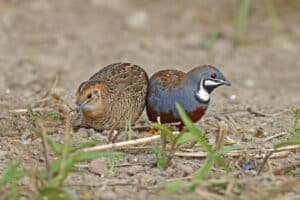
Conclusion
Button quail exemplify nature’s remarkable diversity in reproductive strategies and life cycles. From monogamy to polygamy, these birds display intricate courtship displays that showcase their vitality and attractiveness.
The egg-laying process, with both parents actively participating in incubation, further strengthens their bond and increases their offspring’s chances of survival. Studying button quail reproduction reveals fascinating insights into avian biology and reminds us of nature’s innate ability to adapt and diversify strategies for successful reproduction.

